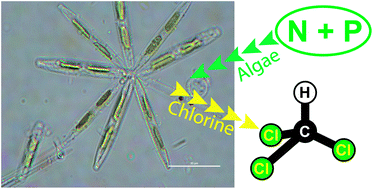Assessing trichloromethane formation and control in algal-stimulated waters amended with nitrogen and phosphorus
Abstract
Nitrogen (N) and phosphorus (P) enrichments can stimulate algal growth in drinking water sources, which can cause increased production of disinfection byproduct (DBP) precursors. However, the effect of systematic N and P enrichments on DBP formation and control has not been adequately studied. In this work, we enriched samples from a drinking water source – sampled on April 5, May 30, and August 19, 2013 – with N and P to stimulate algal growth at N : P ratios covering almost five orders of magnitude (0.2–4429). To simulate DBP-precursor removal processes at drinking water treatment plants (DWTPs), the samples were treated with ClO2 followed by alum coagulation prior to free chlorine addition to assess the DBP formation potential (FP). Trichloromethane (TCM) was the predominant DBP formed and the TCMFP was the highest at intermediate N : P molar ratios (∼10 to 50), which corresponded with the peak in algal biomass, as measured by chlorophyll-a (Chl-a). Algal biomass was P-limited throughout the study period, and co-limited by N for the August 19 sampling set. The differences in TCMFP between the raw and treated waters decreased with increasing P amendment, indicating that ClO2 and alum coagulation became less effective for TCM precursor removal as algal biomass increased. This study highlights the impact of nutrient enrichments on TCM formation and control and has implications for nutrient management strategies related to source water protection and for DWTPs that use source waters increasingly enriched with N and P.


 Please wait while we load your content...
Please wait while we load your content...